SAN LORENZO RIVER, California |
||
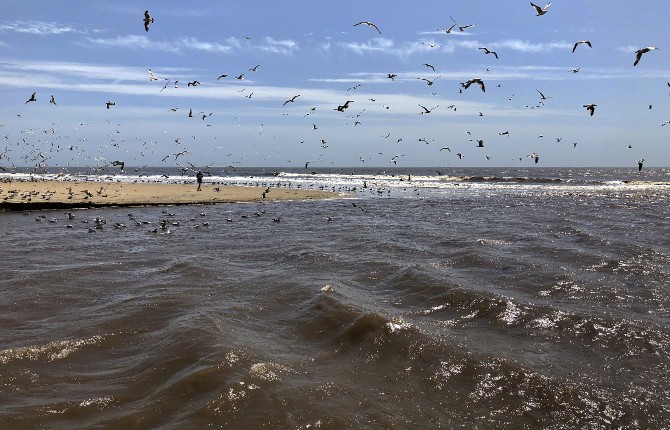 |
||
The San Lorenzo River fully flowing into Monterey Bay. |
||
———————————————————————— Special thanks to Laurie Egan, Coastal Watershed Council. ————————————————————————
Enjoying a glass of water here in Santa Cruz, California? You are drinking me. After being processed at a treatment facility, about fifty-four percent of the drinking water comes directly from my body. Over 100,000 people, lots of visitors, and numerous species, rely on my fluid assets to sustain them each day, which is naturally why it is so important in every watershed in the world to defend and support beings like me, whether great waterways or small streams. I am called the San Lorenzo River and begin my 29.3 miles (47.2 km) ride from the headwaters in the Santa Cruz mountain’s Castle Rock State Park down to Monterey Bay and out into the chilly waves of the Pacific Ocean. As with many towns and villages around the globe, Santa Cruz exists on its current site today because of my water. |
||
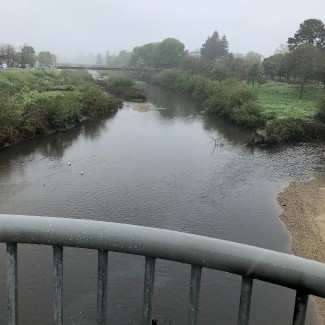 |
 |
|||
View of the San Lorenzo River from Soquel Avenue Bridge on a rainy, overcast day. |
After a rainstorm, the muddy river flows through a quiet section north of Santa Cruz. |
|||
The Ohlone Native American tribes, who speak the Awaswas language, were the first residents along my shores. The number of indigenous Californians dropped enormously between 1769 and 1834, when subsequent settlers attempted to wipe out the native population. Leaders in this movement were even rewarded with positions in the state and federal government! When many of the missions in California were abandoned in the 1830’s, almost ninety percent of the native population had been wiped out. Additionally, 1838 brought a smallpox epidemic that further decimated the tribes. Descendants of the native peoples who were forcibly taken to the Santa Cruz and San Juan Bautista missions are known as the Amah Mutsun Tribal Band. Today they are trying to promote tribal and historical recognition and carry on with some of their ancient traditions. |
||
 |
 |
|||
Banners made by students adorn the riverbanks and inform the public about the first inhabitants of this region. |
Another banner educates about drinking water. |
|||
The original Ohlone villagers, who understood well my rhythms, and how they were sustained by my waters, were perplexed at the hubris of the newcomers who made the decision to build in my floodplain. Consequently, when I do as all rivers do, and occasionally overflow my banks, I flood the downtown area. Large amounts of sediment choke my channel and cause higher water levels. Plans were made to periodically dredge my stomach, but that turned out to be too expensive and detrimental to aquatic life and riparian habitat, so sediment build-up is a continuous problem.
In 1955, as with so many rivers across the United States, the Army Corps of Engineers painfully straightened my spine, bracing me with stone riprap levees. All streams delight in meandering sensuously from side to side, but here I am imprisoned in concrete embankments, compromising my tidal waters, my fish buddies, my riparian plants, and my animal friends. |
||
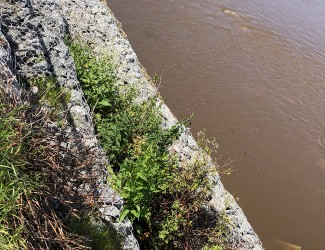 |
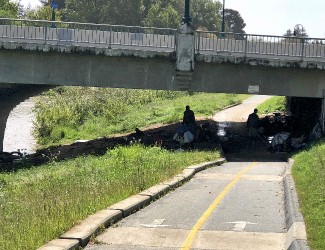 |
|||
Stone riprap levees line the riverbanks. |
Homeless people under a local bridge. |
|||
While my banks are for everyone to enjoy, negative activities such as drug abuse, can dissuade others from enjoying my majesty.
Several local groups, including the Coastal Watershed Council (CWC), are working diligently to protect me and improve my water quality. There is a history of pollution and despite regulations and improvements, bacteria levels in my water are sometimes so high I do not even meet the requirements for safe swimming. The Water Quality Working Group including CWC, the City and County of Santa Cruz, the Surfrider Foundation, and Regional Water Quality Control Board focus on reducing bacteria within my system. The group has launched a public information campaign using social media, a blog, youth education, mailers sent to households, and radio public service announcements to educate youth and adults on the responsibility of everyone to help maintain my health. |
||
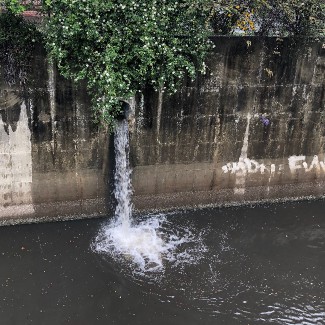 |
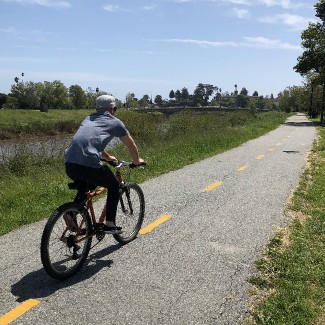 |
|||
After a rain, storm-water runoff empties directly into the river. |
The Santa Cruz Riverwalk is enjoyed by pedestrians and cyclists year-round. |
|||
These organizations have vastly improved my environs by establishing the Santa Cruz Riverwalk, with pedestrian and bike paths on both sides of my course. Signage has been placed along my greenbelt with information about bird, aquatic, and plant life. There are some 122 species of birds that regularly rely on me, including Buffleheads, Common Goldeneyes, and Common Mergansers. At my mouth, shorebirds such as Semipalmated Plover, Yellowlegs, Dowitchers, Peeps, and the ever-present gulls wade, play, and dive-bomb into my innards in search of food. I am home to fish species including the endangered coho salmon, and the threatened steelhead trout. The most common native plant species are the California blackberry, coffee berry, and arroyo willow.
Colorful banners with drawings by school children illustrate important aspects of my life. CWC and other groups host over fifty events near me each year, and there is even a celebratory community festival in my name in June. Also, there is a campaign to increase the favorable mention of me in the local press! |
||
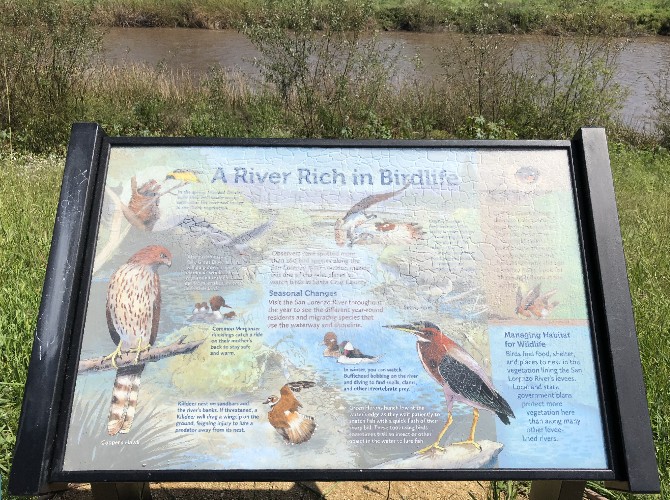 |
||
Riverside signage. |
||
Depending upon how much moisture has fallen upstream, the structure of my course at the mouth changes. If there is enough runoff, I am able to cut a wide path and flow vigorously out into Monterey Bay. At other times, in variable conditions, I am disconnected from the ocean altogether, because sand deposited by ocean currents blocks my way, and a small lagoon is formed. If the lagoon is a mixture of salt and fresh water, it is called brackish. This lagoon provides critical habitat and a welcoming nursery for numerous fish species including the small endangered tidewater goby, which can breed year-round, but rely on the calm conditions in the lagoon for increasing their population numbers. Also, ocean species such as the starry flounder and the topsmelt propagate here. Water from the lagoon still flows into the sea, seeping underground through the sand, until my fresh water mingles in an intimate dance with the salt water of the bay. |
||
 |
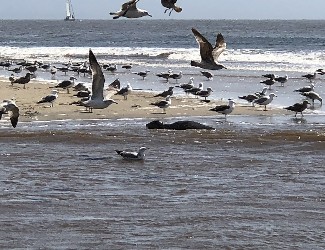 |
|||
Spring poppies. |
A seal hangs out with gulls at the mouth of the river. |
|||
next page: Merced River >
< previous page: Seine




































